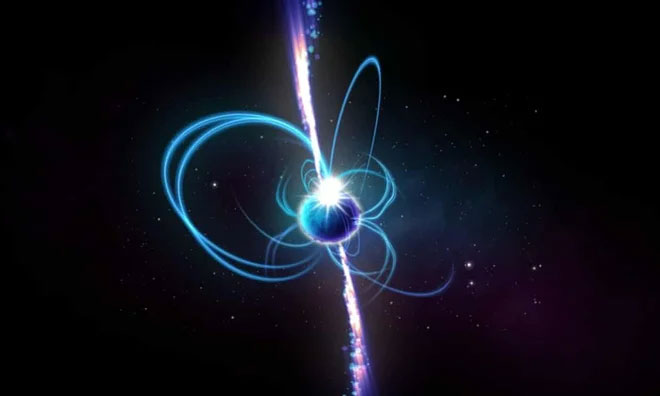Astronomers have just announced the discovery of a mysterious object that emits a burst of radio waves every 20 minutes.
The research team believes that this object could be a new type of slowly rotating neutron star with an extremely strong magnetic field.
The repeating signals were detected in the first three months of 2018 but then disappeared, suggesting they are related to a transient event, such as a “starquake” – an earthquake on a star, the Guardian reported on January 26.
The object, thought to be about 4,000 light-years away from the plane of the Milky Way, matches an astronomical object believed to be a neutron star with the strongest magnetic field known in the universe.
Leading the research team, Natasha Hurley-Walker from Curtin University at the International Centre for Radio Astronomy Research, stated: “This is a type of slowly rotating neutron star that has been theoretically predicted to exist. We did not expect it to be this bright.”

Astronomers have just announced the discovery of a mysterious object that emits radio waves every 20 minutes. (Photo: Guardian).
Neutron stars are remnants of a supernova explosion. With the size of a small city, neutron stars initially rotate extremely quickly and can be detected as pulsars, shining and dimming continuously within milliseconds or seconds.
Over time, neutron stars lose energy, slow down, and eventually fade away.
Astronomers are puzzled because the newly discovered object still emits enough energy to be detected when they observed it from January to March 2018. “Somehow, this star has converted magnetic energy into radio waves much more efficiently than anything we have seen before,” Hurley-Walker said.
However, the subsequent disappearance of the signals raises many questions for scientists. One possibility is that the signals were the result of an event, such as an earthquake, where the extremely thick crust of the neutron star experienced a sudden change, releasing a large stream of energy into space, potentially resulting in the repeating radio wave pulses after the event.


















































